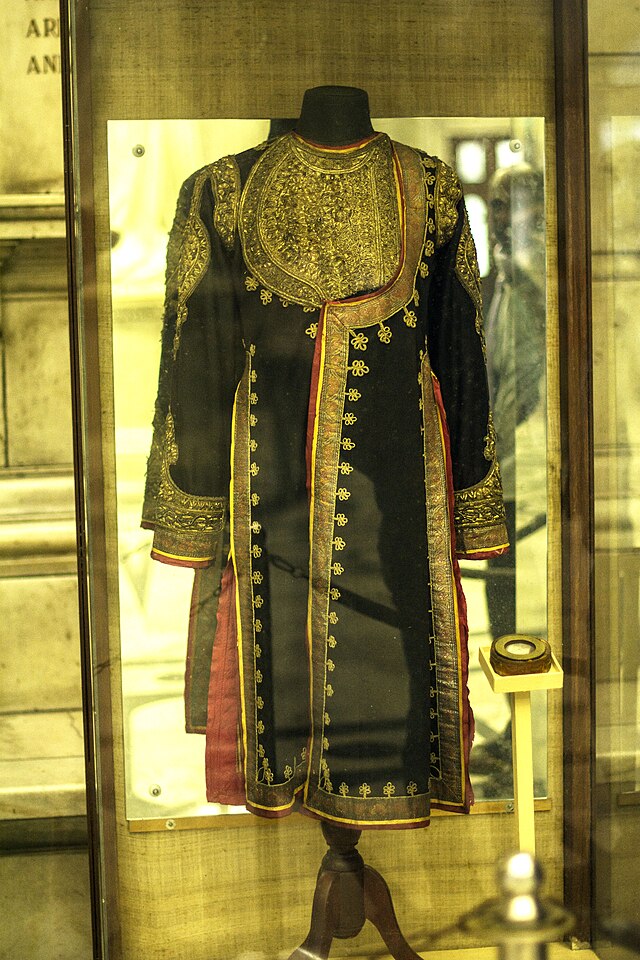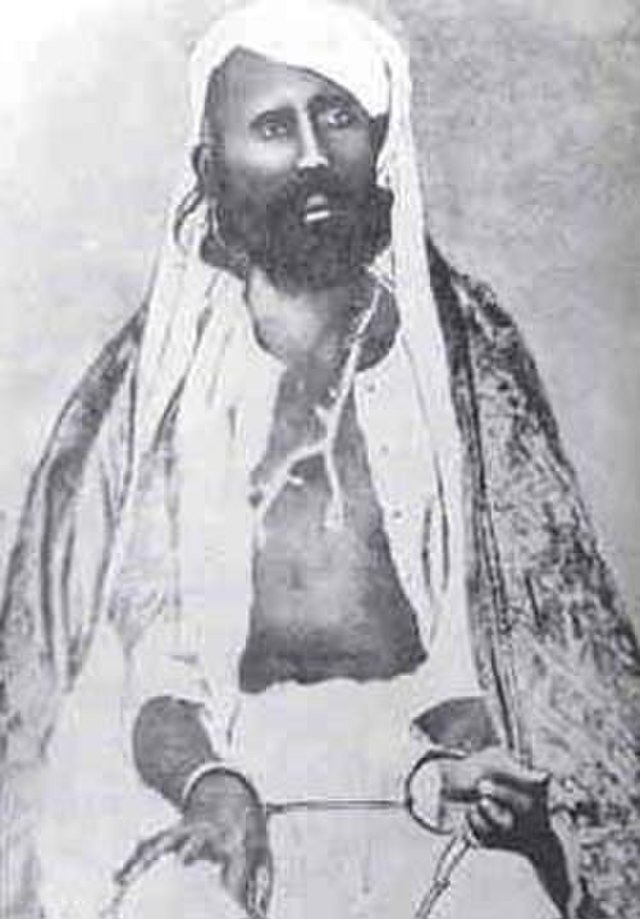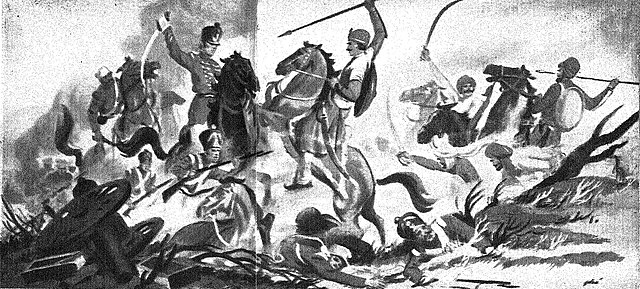Tatya Tope, was a renowned commander during the Indian Rebellion of 1857, a significant chapter in India’s fight for independence. Born as Ramachandra Panduranga Yewalkar to a respected Marathi Deshastha Brahmin family in Yeola, near Nasik, his early life was steeped in the rich traditions of his heritage. Tatya Tope assumed the title “Tope,” denoting a commanding officer, and his first name, Tatya, meant General, reflecting his future role as a leader.
A devoted follower of Nana Saheb of Bithoor, Tatya Tope’s journey in the rebellion began with great zeal. He played a pivotal role in crucial battles, including the capture of Gwalior alongside Rani Lakshmibai of Jhansi. Despite his determination, he faced defeats at the hands of General Napier’s British Indian troops, leading to the abandonment of certain campaigns.
Official records revealed that Tatya Tope hailed from a Maratha Vashista Brahman lineage, his father being Panduranga Yewalkar, and his mother, Rukhma Bai. His stature and distinctive appearance, always adorned with a white chukri-dar turban, left a lasting impression on those who encountered him.
Tragically, Tatya Tope met his fate at the hands of the British Government, facing execution at Sipri (now Shivpuri) on 18th April 1859. His story remains a poignant testament to the struggle of countless Indians during a pivotal era in the nation’s history.
Catalytic Moments: Tatya Tope’s Role in the Indian Rebellion of 1857
Following the eruption of the Cawnpore (Kanpur) rebellion on 5 June 1857, Nana Saheb emerged as the leader of the insurgent forces. After the British forces in Cawnpore capitulated on 25 June 1857, Nana was formally acclaimed as the Peshwa later that month. Following a defeat, Nana’s troops were compelled to retreat to Bithur. Subsequently, Havelock’s forces crossed the Ganges, prompting a retreat to Awadh. It was during this period that Tatya Tope assumed the role of Nana Saheb’s representative in Bithur.
Tatya Tope played a significant role in the tragic events of the Cawnpore massacre on 27 June 1857. Despite the onslaught, Tope managed to maintain a resilient defensive position until he was eventually dislodged by the British forces on 16 July 1857. Later, he engaged in a fierce confrontation with General Cyrill during the Second Battle of Cawnpore, commencing on 19 November 1857 and lasting for seventeen intense days. However, Tope and his army met defeat when the British, under Sir Colin Campbell, launched a decisive counterattack. Following this setback, Tope and fellow rebels sought refuge with the Rani of Jhansi, extending their support to her cause during these challenging times.




Strategic Encounter: Tatya Tope’s Conflict with Colonel Holmes
Subsequently, Tatya Tope and Rao Saheb, having played a pivotal role in aiding Jhansi during the British onslaught, successfully facilitated Rani Lakshmibai’s escape from the impending attack. Alongside Rani Lakshmibai, they wrested control of Gwalior Fort, proclaiming the advent of Hindavi Swaraj (Free Kingdom) in the name of Nana Saheb Peshwa. However, their triumph was short-lived as Gwalior fell back into British hands. In the aftermath, Tope and Rao Saheb, Nana Saheb’s nephew, sought refuge in Rajputana, the present-day Rajasthan.
Despite their determination, entering Bundi proved insurmountable for Tope. Announcing his intention to move south, he veered westward, directing his course towards Nimach. A relentless pursuit ensued, led by Colonel Holmes and General Abraham Robert. The rebel force found themselves trapped between Sanganer and Bhilwara, facing a formidable British onslaught. Tope’s tactical retreat took him to Udaipur, where, after seeking solace at a revered Hindu shrine on 13 August, he regrouped his forces along the Banas River.
Despite his efforts, Roberts’s forces once again prevailed, compelling Tope to flee anew. Crossing the Chambal River, he arrived at Jhalrapatan in the State of Jhalawar, marking yet another chapter in his relentless quest for independence.
Persistence and Perseverance: Tatya Tope’s Continued Resistance
Following the suppression of the 1857 Revolt by the British, Tatya Tope’s determination as a guerrilla fighter remained unyielding amidst the dense jungles.[8] He skillfully rallied state forces against the Raja, successfully replenishing the artillery lost during the Banas River encounter. Tope led his forces towards Indore, yet faced relentless pursuit by the British, under the command of General John Michel, as he fled towards Sironj.
Tope, accompanied by Rao Saheb, devised a tactical division of their forces. Tope aimed for Chanderi with a larger force, while Rao Saheb ventured towards Jhansi with a smaller contingent. However, circumstances compelled their reunion in October, culminating in another defeat at Chhota Udaipur.
By January 1859, Tope’s journey led him to the state of Jaipur, where two more defeats awaited him. It was here that he encountered Man Singh, the Raja of Narwar, and sought refuge at his court. Man Singh, embroiled in a dispute with the Maharaja of Gwalior, succumbed to British pressure. In a negotiated agreement, he handed Tope over to the British, ensuring Tope’s life and safeguarding his family from potential repercussions by the Maharaja.
Following these events, Tope was entrusted to the British authorities and subsequently brought to Shivpuri, where he confronted his inevitable fate.
Tatya Tope’s Fateful End: The Execution and Legacy
Tatya Tope, while acknowledging the charges levied against him, asserted that his ultimate accountability rested solely with his master, the Peshwa. On 18th April 1859, at Sipri, he faced his fate and was executed.[ To this day, the State Government and local communities commemorate Tatya Tope annually, organizing the Shaheed Mela, a solemn tribute to his sacrifice and bravery.




[…] Fort in Rajasthan, emerged not just as a ruler but as an embodiment of unwavering bravery, patriotism, and resilience. His journey from a princely childhood to a legendary warrior is an epic saga […]
[…] Congress, Bose’s indomitable spirit and vision for a liberated India resonated deeply with freedom fighters across the […]